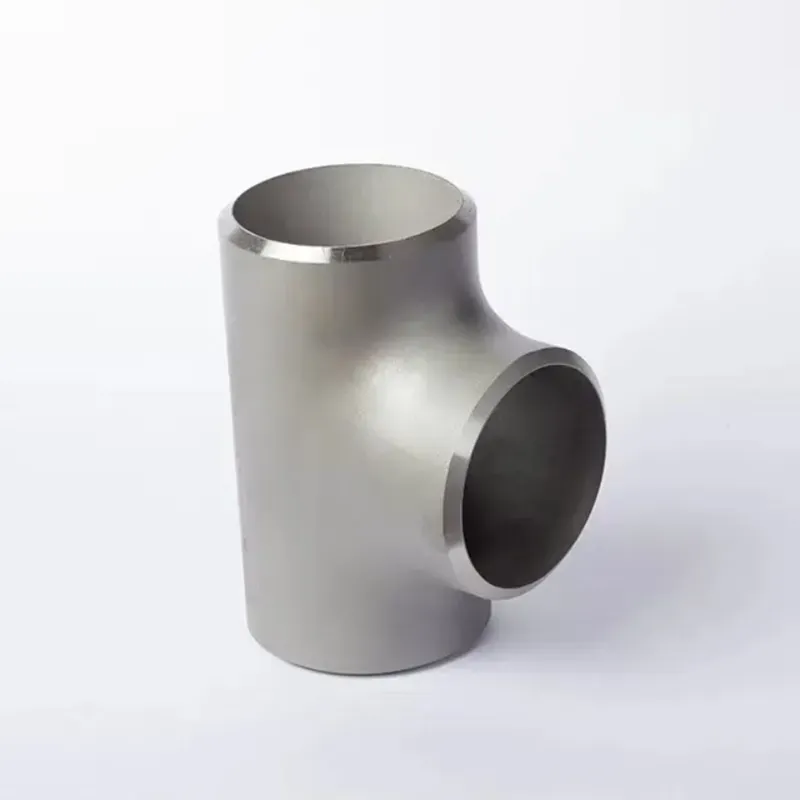-
Cangzhou Yulong Steel Co., Ltd.
-
Phone:
+86 13303177267 -
Email:
admin@ylsteelfittings.com
- English
- Arabic
- Italian
- Spanish
- Portuguese
- German
- kazakh
- Persian
- Greek
- French
- Russian
- Polish
- Thai
- Indonesian
- Vietnamese
- Zulu
- Korean
- Uzbek
- Hindi
- Serbian
- Malay
- Ukrainian
- Gujarati
- Haitian Creole
- hausa
- hawaiian
- Hebrew
- Miao
- Hungarian
- Icelandic
- igbo
- irish
- Japanese
- Javanese
- Kannada
- Khmer
- Rwandese
- Afrikaans
- Albanian
- Amharic
- Armenian
- Azerbaijani
- Basque
- Belarusian
- Bengali
- Bosnian
- Bulgarian
- Catalan
- Cebuano
- China
- China (Taiwan)
- Corsican
- Croatian
- Czech
- Danish
- Esperanto
- Estonian
- Finnish
- Frisian
- Galician
- Georgian
- Kurdish
- Kyrgyz
- Lao
- Latin
- Latvian
- Lithuanian
- Luxembourgish
- Macedonian
- Malgashi
- Malayalam
- Maltese
- Maori
- Marathi
- Mongolian
- Myanmar
- Nepali
- Norwegian
- Norwegian
- Occitan
- Pashto
- Dutch
- Punjabi
- Romanian
- Samoan
- Scottish Gaelic
- Sesotho
- Shona
- Sindhi
- Sinhala
- Slovak
- Slovenian
- Somali
- Sundanese
- Swahili
- Swedish
- Tagalog
- Tajik
- Tamil
- Tatar
- Telugu
- Turkish
- Turkmen
- Urdu
- Uighur
- Welsh
- Bantu
- Yiddish
- Yoruba

Oct . 13, 2024 09:15 Back to list
Understanding ANSI B16.5 Class 150 Slip On Flange Specifications and Applications
Understanding Slip-On Flanges ANSI B16.5 Class 150
Slip-on flanges are crucial components in piping systems, widely utilized across various industries, including oil and gas, water treatment, and manufacturing. Among the standards that govern the design and application of flanges, ANSI B16.5 Class 150 stands out due to its specific guidelines regarding nominal pipe sizes, wall thicknesses, and pressure-temperature ratings. In this article, we delve into the characteristics, applications, and advantages of slip-on flanges that meet ANSI B16.5 Class 150 specifications.
What is a Slip-On Flange?
A slip-on flange is designed to fit over the end of a pipe, making it relatively easy to install and align. It features a bore that is slightly larger than the outer diameter of the pipe. For this reason, the pipe can be slipped into the flange, and welding is applied around the top and the bottom of the flange to secure it in place. This design simplifies assembly and disassembly processes, making slip-on flanges popular in various applications where maintenance is necessary.
ANSI B16.5 Class 150 Specifications
ANSI B16.5 is a standard that specifies the nominal sizes and pressure ratings of flanges to ensure uniformity and compatibility in piping systems. Class 150 refers to the pressure rating of the flange, which can withstand pressures of up to 150 psi at a temperature of 100°F. Generally, as temperature increases, so does the pressure rating drop. It’s essential for engineers and designers to consider these factors to ensure that the best materials are selected for the application at hand.
The dimensions of Class 150 slip-on flanges adhere to specific standards, which can be found in various reference manuals. Commonly, these flanges come in sizes ranging from ½ inch to 24 inches nominal pipe size, making them versatile for many system designs. The thickness and bore sizes are set to ensure compatibility with standard pipes, facilitating a seamless installation process.
Applications of Slip-On Flanges
Slip-on flanges are utilized in several applications, ranging from low-pressure systems to more demanding environments. Their ease of installation makes them particularly suitable for
1. Water Supply Systems In municipal and industrial water supply systems, slip-on flanges are commonly employed due to their reliability in creating a strong, tight seal. 2. Oil and Gas Industries Slip-on flanges are critical in applications where large volumes of liquids or gases are transported. They are especially advantageous in pipelines undergoing routine maintenance.
slip on flange ansi b16 5 class 150

4. Chemical Processing In the chemical industry, slip-on flanges are used due to their ability to handle various substances while maintaining pressure integrity.
Advantages of Using Slip-On Flanges
The advantages of slip-on flanges are manifold. Some primary benefits include
- Ease of Installation Slip-on flanges can be easily installed without the need for extensive preparation. This reduces labor costs and time during setup. - Cost-Effective Generally, slip-on flanges are less expensive than welded flanges. Their simple design could lead to savings over the lifecycle of the piping system.
- Flexibility in Alignment Because these flanges can be adjusted after being placed on the pipe, they offer flexibility in alignment before the final welding is performed, which can be invaluable during installation.
- Reduced Weight Compared to other flange types, slip-on flanges tend to be lighter, decreasing the overall load on the piping support system.
Conclusion
In summary, slip-on flanges conforming to ANSI B16.5 Class 150 encompass an essential part of modern piping systems. Their reliability, coupled with ease of installation and cost-effectiveness, makes them an ideal choice for various applications in different industries. When selecting the right flange, always ensure compliance with the relevant standards and consider the specific needs of your piping system for optimal performance. Understanding the characteristics of slip-on flanges will undoubtedly lead to more efficient system design and operation.
Latest news
-
ANSI 150P SS304 SO FLANGE
NewsFeb.14,2025
-
ASTM A333GR6 STEEL PIPE
NewsJan.20,2025
-
ANSI B16.5 WELDING NECK FLANGE
NewsJan.15,2026
-
ANSI B16.5 SLIP-ON FLANGE
NewsApr.19,2024
-
SABS 1123 FLANGE
NewsJan.15,2025
-
DIN86044 PLATE FLANGE
NewsApr.19,2024
-
DIN2527 BLIND FLANGE
NewsApr.12,2024
-
JIS B2311 Butt-Welding Fittings LR/SR 45°/90° /180°Seamless/Weld
NewsApr.23,2024











